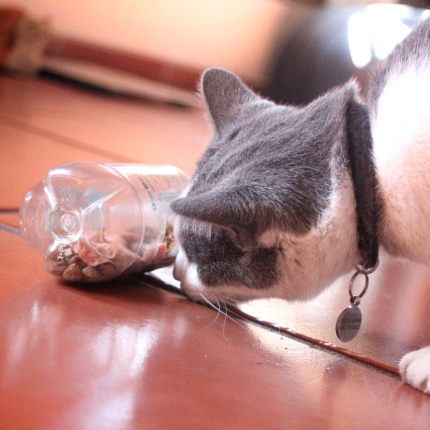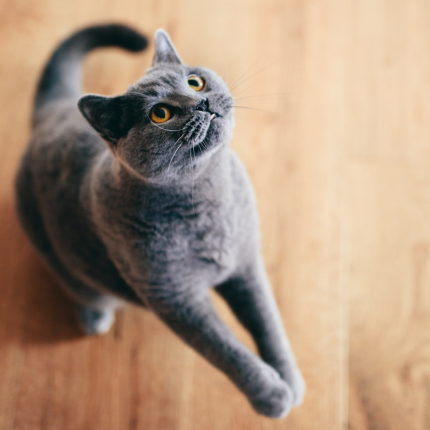Do Food Puzzles Help Cat Activity Levels?

At Sparkle Kitty, we’re passionate advocates of food puzzles as an excellent enrichment option for our feline friends. Considering their natural predator instincts, cats have evolved to work for their food. However, as indoor pets, we’ve handed them food in a bowl, essentially taking away their natural foraging jobs.
Like foraging enrichments used with zoo and laboratory animals, food puzzles have gained popularity for pet dogs (e.g., the Kong) and are now gaining popularity for cats. These puzzles require cats to forage for their food, engaging them in various levels of problem-solving and mental stimulation, from simple activities like rolling a ball to access dry food to sliding open doorways to reach a well of treats.
Investigating Food Puzzles’ Impact on Feline Activity
A recent pilot study, titled “Pilot study evaluating the impact of feeding method on overall activity of neutered indoor pet cats,” published in the Journal of Veterinary Behavior, examined the effect of food puzzles on cat activity levels. The study utilized accelerometer-based “activity collars” to measure the cats’ movement.
Nineteen household cats participated in the study, with some cats being free-fed while others were fed once or twice per day. A crossover design was employed, with cats switching between regular food bowls and food puzzles. Cats were given time to adjust to the food puzzles and acclimate to the new feeding method.
Unexpected Results
Surprisingly, the results showed no significant differences in activity levels between cats eating from bowls versus those using food puzzles. Additionally, the type of food puzzle (Indoor Hunting Feeder vs. PetSafe puzzles) did not impact activity levels. Age was the only notable factor influencing activity levels, with older cats being less active in general.
While the results may seem counterintuitive, there are several possible explanations. Cats using food puzzles may compensate for their activity by being less active at other times, leading to similar overall activity levels. The study’s sample size was relatively small, potentially limiting the ability to detect subtle differences between bowl feeders and puzzle feeders. Moreover, food puzzles offer other benefits, such as slowing feeding, providing mental stimulation, and warding off boredom or problematic behaviors.
Previous studies have shown that cats display increased anticipatory activity levels while waiting for a meal, and increasing the number of meals per day can effectively boost their overall activity. It would be beneficial to replicate this study with a larger sample size to enhance statistical power and validate the results.
Other Benefits of Food Puzzles
Even though this study suggests that food puzzles may not significantly increase activity levels in cats, we firmly believe in their positive effects based on extensive research on foraging enrichment in other species. Cats in this study easily transitioned to puzzle feeding without any issues, indicating that food puzzles can be successfully incorporated into their routines.
The undeniable benefits of food puzzles for cats may not solely lie in increasing activity levels (at least in the short term) but rather in the mental stimulation, problem-solving opportunities, and overall well-being they provide. As a result, we may need to reframe how we discuss the positive effects of food puzzles on feline behavior. Ultimately, food puzzles remain an excellent enrichment tool to enhance the lives of our beloved feline companions.

Featured Articles

Greebles and Cats: The Origin and the Meaning
You may have seen an internet sensation concerning cats labeled “greebles.” Feel out of the loop? We’re here to help you. In 2019, Reddit user /user/literallyatree commented on a Reddit post about a cat that looks like it’s trying to slap a ghost. This user commented: “My family calls things…

Polydactyl Cats: Just More Beans to Love
Polydactyl cats have become extremely popular in recent times. As a result, more and more people are interested in learning more about this six-toed cat and want to get one of their own. If you are a cat lover intrigued by polydactyl cats, you have come to the right place….

Why Do Cats Roll Over Into Their Backs But Not Let You Touch Their Bellies?
It’s common knowledge dogs love to have their tummies rubbed when they freely lay down before you and roll onto their backs. But, if you’re also familiar with cats, you know that when they roll onto their backs with their bellies exposed, rubbing the belly will most likely result in…